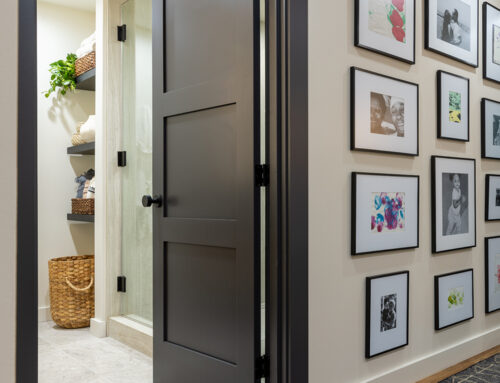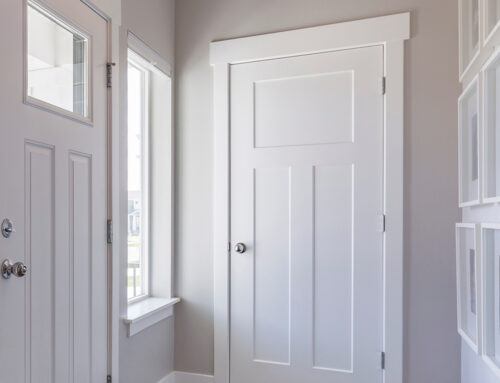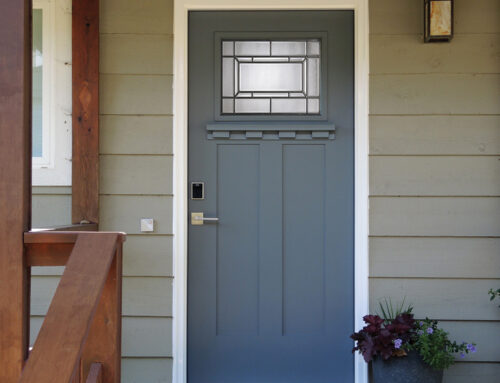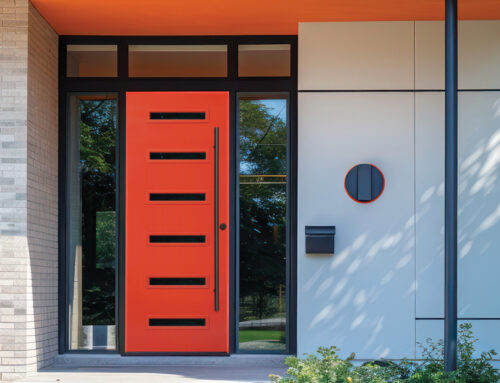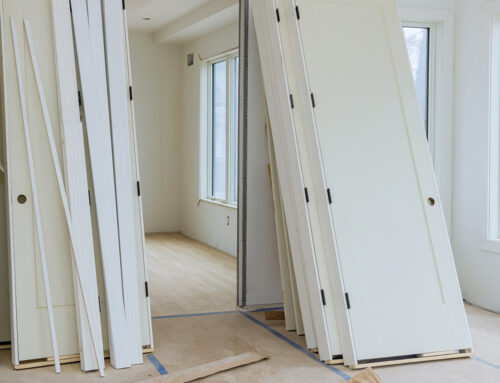A door is just a door, right? Not exactly – there are several door components that are crucial to door operation that many don’t think about right away. The door itself is the most obvious, and perhaps any glass windows, but the other components play a huge part in a quality door installation.
Hinges
Hinges are not only important to the operation of a door, but they are also what make the door operate in the first place. Both interior and exterior doors require strong hinges that can support the weight of the door and provide smooth open and close functions. There are four parts that make up a single hinge:
- Leaf – The flat parts of the hinge that attach to both the door and frame.
- Knuckle – The rounded parts that intertwine with the sleeve to form a hollow cylinder.
- Pin – The pin slides into the sleeve to connect the two leaf sections.
- Sleeve – The sleeve intertwines with the knuckles on the opposite leaf to create one uniform cylinder.
Exterior Door Hinges
When choosing hinges for your exterior door, you’ll want to make sure that you select something durable as excessive use can wear down the hinges over time. A strong hinge provides your come with safety and security. There are a few different exterior hinge types:
- Butt – The most common type
- Flush – Designed to take up the least amount of space
- Ball Bearing – Heavy-duty for heavier doors
- Case – Typically decorative and great for front doors
- Pivot – Used for taller doors to help keep them aligned
Interior Door Hinges
Interior hinges aren’t designed for outdoor use, and come in a few different types:
- Butterfly – Used for lighter interior doors
- Bi-fold – Used for closet doors because they can pivot in multiple directions
- Double Action Spring – Used for doors that need to swing both ways, such as on a butler’s pantry or kitchen

Knobs
A doorknob determines the opening and closing operation of the door, and what the user must do to gain access.
Interior Doorknobs
- Privacy – These knobs lock but don’t require a key, and are used commonly on bathrooms and bedrooms
- Passage – Standard doorknobs without a locking mechanism
- Dummy – Commonly used on closet doors where a latch is not present
Exterior Doorknobs
- Keyed Entry – A locking knob that requires a key to operate, used for most exterior doors
- Keyless – These use a keypad or similar solution to unlock the door with a code instead of a key
Locks
There are two main types of locks that use different methods for securing your door:
- Mortise – by far the most common, these require a pocket be cut into the door where the lock will sit. Most residential and commercial doors you see have mortise locks.
- Tubular – often used in commercial applications that require enhanced security (ATMs, for example), these use a cylinder with multiple pins that control the locking mechanism.
Other Accessories
There are many other accessories that may be attached to a door, and exploring their various purposes can help you determine whether your door requires them or not. A few examples include:
- Door stops – These can come in either baseboard mounted, spring door (installed on the door hinge), or wall bumper types, and prevent the door from hitting the wall or other objects.
- Weather strips – These provide a seal around the door to keep moisture and insects out, and are common on residential exterior doors.
Why Trimlite?
Trimlite has been providing high-quality door components since 1992 and we specialize in all parts of a door that provide safety, security, and smooth operation. Shop with us today to explore a wide variety of useful door components.


